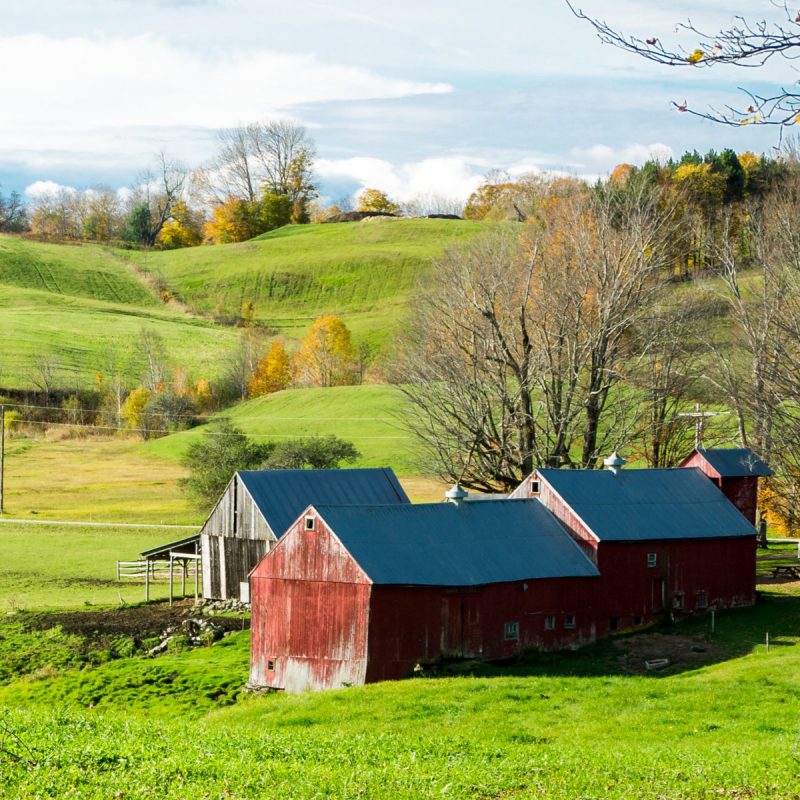Over the past decade, more Americans have become aware of environmental issues. Too much consumption, without renewable resources, will lead to problems that the country isn’t equipped to deal with.
Luckily, the US isn’t in as much trouble as you may think. Plenty of states, from Vermont to South Dakota, are leading the country in being environmentally friendly. As these states continue to set an example and push the boundaries of environmental stewardship, the rest of the country can learn and follow along.
Today, we’ll look at the top ten most eco-conscious states in America, and what makes them so good at being eco-friendly. This list comes from a recent study by Wallet Hub, which looked at 27 different key metrics to determine how eco-friendly each state was.
Most of the states on this list lead the country in being green because of certain laws and regulations that they have passed. In states with higher amounts of regulation, there also tends to be a spike in environmental friendliness.
All of the states on this list achieve high marks in air quality, water quality, soil quality, LEED-certified buildings per capita, percentage of renewable energy consumption, gasoline consumption, percentage of recycled municipal solid waste, and total municipal solid waste per capita. However, each state excels in a unique way, and that’s what we’ll highlight while looking at the ten greenest states in America.
Related: Worldwide Sustainability
1. Vermont
Vermont has a lot to hang its hat on, such as billboard-free mountains and nature preserves, but what really sets Vermont apart from other states is the amount of forested land it holds. Currently, 75% of the land is forested, which means the state has a more natural environment than urban states.
2. Oregon
Oregon uses a ton of renewable energy. While Oregon is technically tied with Washington, South Dakota, and Maine for the highest percentage of energy consumption from renewable sources, the state’s population and arid eastern desert make its use of renewable energy in such high amounts truly remarkable.
3. Massachusetts
Massachusetts is one of the country’s leaders in reducing greenhouse gas emissions. Given the sprawl of the Boston metro area, this is particularly impressive. The state currently has greenhouse gas emissions goals set through 2050. The state aims to reduce total emissions by 80%, and has already beaten a few of its goals.
4. New York
How does New York make this list, especially with New York City likely making sustainability goals difficult? It all boils down to the fact that New Yorkers use the least amount of gasoline per capita. This is due in large part, no doubt, to the New York Subway system, as well as the state’s overall commitment to public transit.
5. South Dakota
South Dakota stands out, not because it leads the country in one specific category, but because it’s so highly ranked in many categories. It’s tied for first in soil quality and percentage of renewable energy consumption, and it’s fifth in air quality.
6. Minnesota
It’s not surprising that the Land of 1,000 Lakes is also the state with the highest water quality in the country. Interestingly enough, Delaware is second.
7. Connecticut
Connecticut is another surprising entry on the list. This state is home to a lot of alternative transit sources. Plus, it’s state tourism website touts the number of electric car charging stations.
8. New Hampshire
New Hampshire makes the list because of its efforts on the solid municipal waste front. It’s not as flashy as Connecticut or Vermont, but New Hampshire is in the top five for both highest percentage of recycled municipal solid waste and lowest total municipal solid waste per capita.
9. California
It’s no surprise that California is on this list, and the Golden State gets its ranking from its emphasis on emissions regulations. In fact, California’s emissions regulations have set the standard for states across the country.
10. Rhode Island
Rhode Island uses the least energy per capita. Before you point out the small size of Rhode Island, it ranks 45th out of the 52 states and territories (District of Columbia and Puerto Rico are included) for population, with just over 1.3 million.
Regardless of where you live, there’s likely an environmental category that your state excels in. As we all work towards the goal of a more sustainable society, we’ll have to learn from each other to lessen our impact on the planet.

